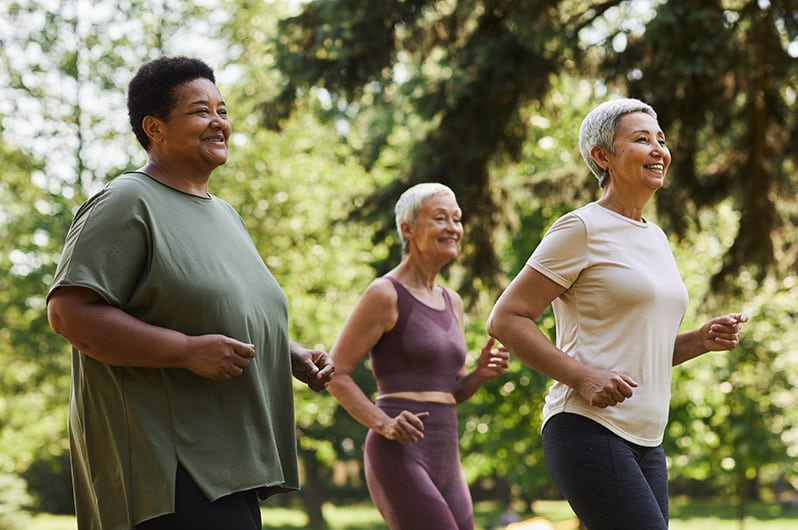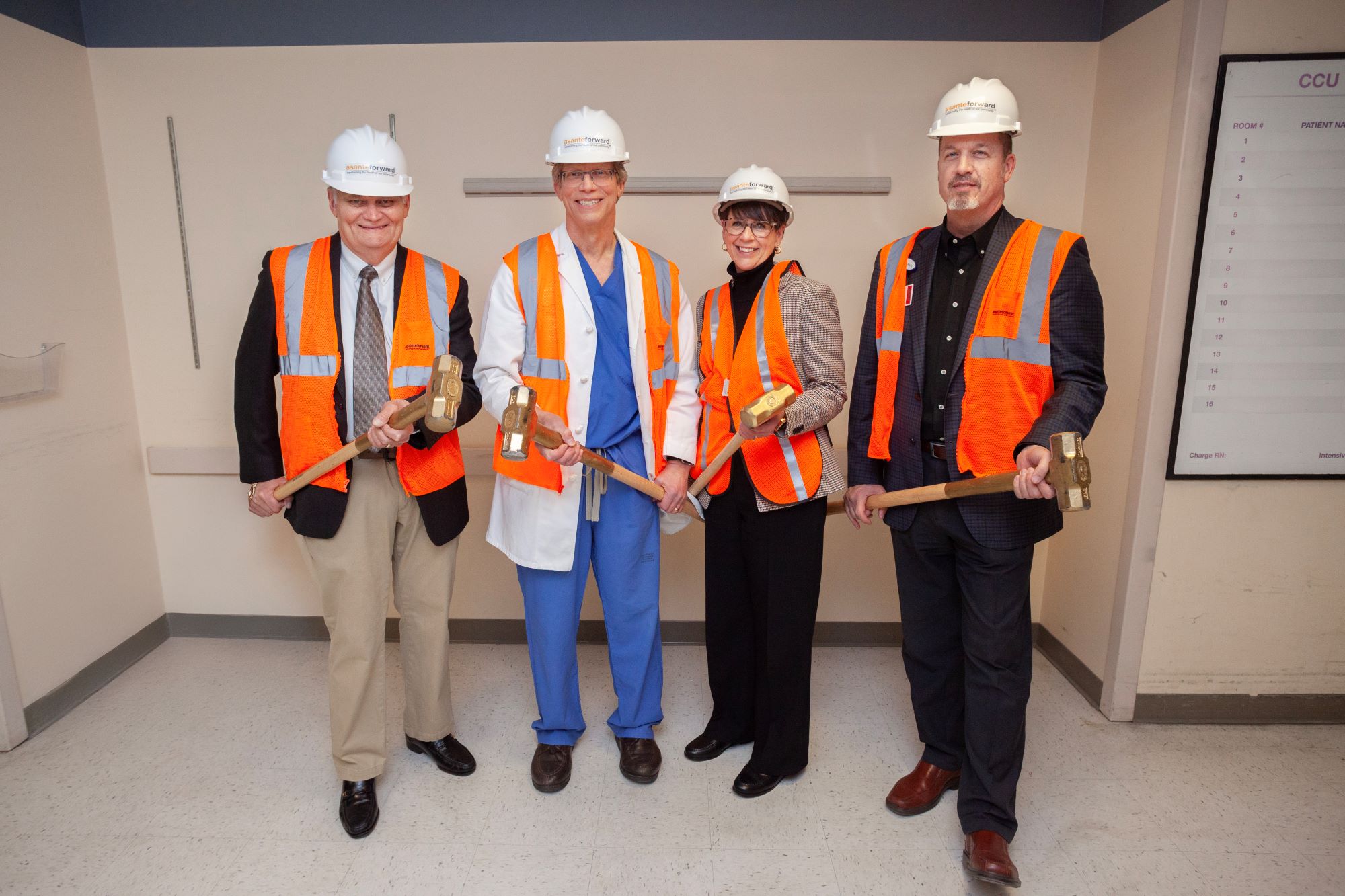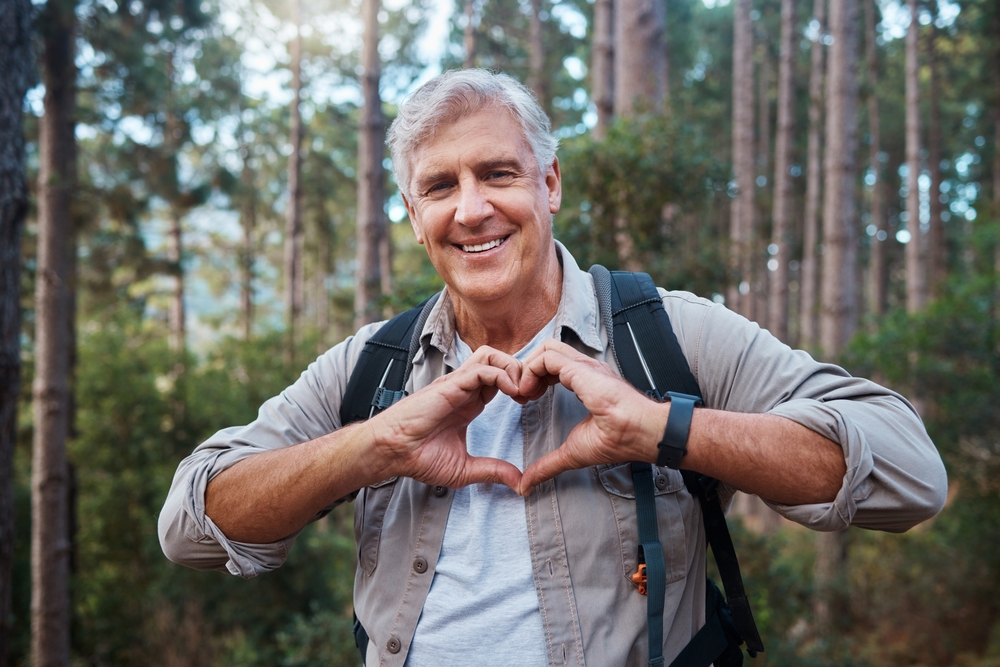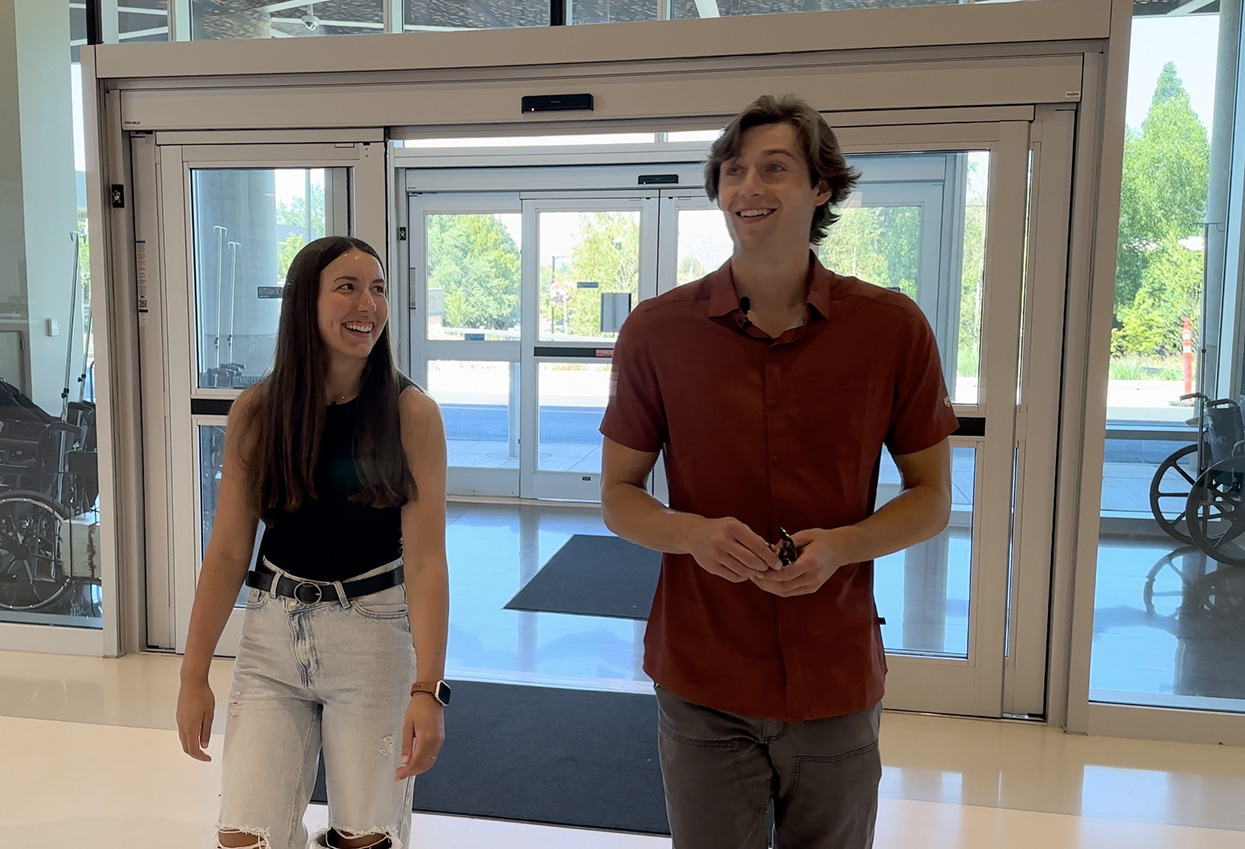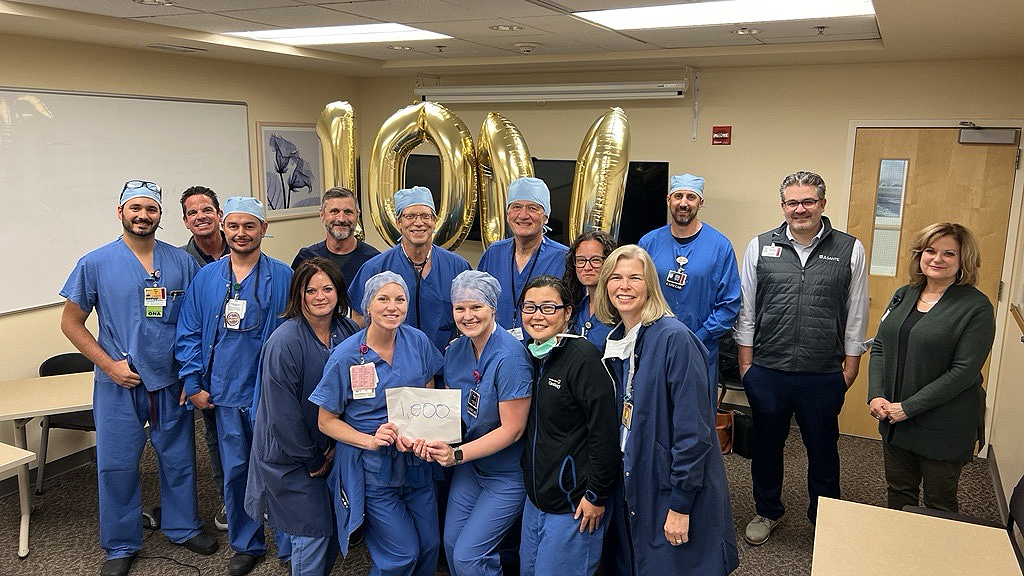Summary
Hailey Einck, a sports medicine PA, delves into her passion for running and science. She highlights the importance of a balanced exercise routine, emphasizing the often overlooked benefits of strength training for joint and brain health. Hailey also shares her personal journey through injuries and the lessons she learned about fitness sustainability.
Introduction
Welcome back to ‘Unlock Movement with Asante,’ the podcast dedicated to helping you shape a healthier, more fulfilling life by exploring the expansive world of movement. Are you feeling stuck in a stale fitness routine? Or are you grappling with an injury that’s causing you to reconsider your commitment to health? Either way, you’re in the right place.
Today, we have the pleasure of featuring Hailey Einck—a Physician Assistant specializing in Orthopedic Surgery and Sports Medicine. Beyond her professional expertise, Hailey is also an avid runner with a compelling story of resilience and transformation you won’t want to miss.
Join us as Hailey shares how a significant back injury during her teenage years became a pivotal moment in her life, igniting her passion for running and ultimately leading her to a career in sports medicine. We’ll also unpack the often-underestimated importance of strength training, not just for physical prowess but also for cognitive well-being. Listen as Hailey outlines how she strikes a balance between cardiovascular exercise and resistance training, crafting an effective and sustainable fitness routine.
As you tune in to Hailey’s story, consider how life’s unexpected challenges can sometimes serve as an opportunity to reassess, recalibrate, and redefine your connection to movement. Could today be the turning point in your fitness journey, leading you to a more integrated approach to wellness? Let’s find out together!
Subscribe
Unlock movement with Asante: episode 5 is now available. Dive deeper into the science of physical well-being with our 5 part series.
Tessa Hulse
Hello. I’m Tessa Hulse.
Valencia Rollins
And I’m Valencia Rollins,
Valencia Rollins
welcoming you to unlock movement with Asante.
Valencia Rollins
We’re on a mission to help you transition from a sedentary lifestyle to one more vibrant and full of movement.
Tessa Hulse
Whether you’re considering your first steps toward an active lifestyle or you’re looking for an extra spark of motivation, we’ve got you covered with tips, advice, and inspiring conversations with health care professionals.
Valencia Rollins
Welcome back, listeners. Today, we have Hailey Einck with us, a dedicated physician assistant in orthopedic surgery and sports medicine with Asante.
Tessa Hulse
Hailey is passionate about helping people get back to what they love, whether it’s running or snowboarding. And when she’s not busy with her patients, she’s exploring the outdoors with her labradoodle Luna.
Valencia Rollins
Together, we’ll explore everything from personal fitness routines to creative ways to incorporate more movement into our lives.
Tessa Hulse
So grab your running shoes or perhaps your furry friend, and let’s dive in.
Valencia Rollins
Could you start off by sharing with our listeners a little bit more about your journey, especially with you being an athlete and how you ended up in the field of sports medicine?
Tessa Hulse
Yeah.
Hailey Einck
Hello. Thank you. So, I did grow up here in the Rogue Valley. I was very fortunate. I spent a great deal of my childhood outside, and being active never really felt like an option because of that. So, again, very fortunate with that environment. I fell in love with running when I was a high school student, and at that same time, I was also learning my love for science. So when I went to Oregon State, I studied kinesiology or exercise science, and then I had a focus in medicine. When I went into PA school, I was just ultimately drawn to the operating room for team-based structure and the fervor and the dynamicity of it all. Working with a team and getting to work with my hands to ultimately fix a problem is really exciting and fulfilling. So that’s sort of how I got to be in sports medicine, and getting people back to doing what they love is very exciting for me.
Valencia Rollins
Thank you so much for sharing that. We’ll talk to our listeners about your own fitness routine and how it supports your mental and physical well-being.
Hailey Einck
Sure. I love to run. That’s my main sport. I used to run marathons and a lot of trail events when I was in undergrad, and that was very exciting. I got really into trail races. In my later undergrad years, I developed some chronic injuries that kind of took me back from the sport for a bit. And then, when I was in grad school, I actually suffered a couple of bigger injuries that set me back, so it did teach me a lot about balance and bringing some more resistance, training some active recovery modalities into the picture and helped me kind of implement those all moving forward. So if I could run every single day, I would, but that doesn’t serve me very well. So I’ve started to incorporate a healthy dose of resistance training into my weekly regimen, as well as some active recovery days and then really trying to take a day off every week, which can be hard for me because it is my release and it’s the way that I kind of stay.
Valencia Rollins
Absolutely, absolutely. And you brought up some great points, Hailey, which is a great segue into a question that we have for you to talk with our listeners about the role of strength training. Right. To make sure you have a balanced exercise routine. Right. And like you said, you couldn’t just get away with doing cardio. Can you talk more about the importance of having a balanced exercise routine?
Hailey Einck
Sure. So like I mentioned before, balance is key when you’re thinking about a weekly exercise regimen. Cardio is obviously very important for a lot of things. Cardiovascular health is one of the most obvious ones that people think of when they think of running or cycling. What we want to think about when we’re doing resistance training and incorporating that into our regimen is building a fitness foundation. And as we age, our joints are going to degenerate just like everything else. That includes the cartilage, the bone and the surrounding soft tissues. So developing a low-impact strength program will not only strengthen the muscles around those joints, but it improves your bone health while preventing chondral loss. So, strength training equals healthy joints. Another great benefit from strength training is actually brain health. It’s been shown that periods of increased heart rate at high intensities, which you can get from a high-intensity resistance training program, the actual mechanical shearing forces of that fast blood flow to the capillaries in your brain causes an increase in brain-derived neurotropic factor, which manages your overall cell metabolism and preservation. This leads to the preservation of your neurons in your brain.
Hailey Einck
So there was a study with over 1400 women with a 44-year follow-up that showed a nine-and-a-half-year delay in dementia onset, which is very exciting. There was another study, about 2500 people, ages 30 to 94, so big wide age span there. And this was studying cognitive function using brain MRIs. The study showed an increase in cortical volume and overall brain volume with resistance training. They studied different intensities of exercise. The best results were between the moderate and high intensity, though they saw the most rapid increase in cognitive function between sedentary and moderate intensity. So it’s almost immediate, the benefits that you get from being sedentary to just establishing some sort of moderate-intensity activity into your exercise routine.
Valencia Rollins
Yeah, absolutely. So, Hailey, I’d like to just go back just a second to talk to our listeners about personal obstacles. And I know you shared that you had a couple of injuries and that kind of set you back from running, the sport you love. Can you talk a little bit more about that challenge for you on your fitness journey? And what you learned that would be helpful for our listeners.
Hailey Einck
Sure. So, an injury was actually what got me into running in the first place. On my 16th birthday, I broke my back and I wasn’t able to do anything for a while. I had been a soccer player for some time, and I was sort of feeling burnt out with soccer. It wasn’t really my thing. And when I was able to return to sports activities, I decided to join cross country so I could get in better shape. And most of my friends did cross country too, so that was a motivator for sure, but I just fell in love with the sport. I became the captain the next year, and it’s where I developed some of my longest-lasting friendships and some of my favorite memories. Like I said, in undergrad, I had some overuse injuries from just running every single day. That’s when I was marathon training. I did not take days off. I had a lot of foot and ankle injuries that set me back. And then, when I was in graduate school, I suffered an overuse injury called a stress reaction in my sacrum, and that took me out of running for a while.
Hailey Einck
In my graduate school, we had a PA program and a physical therapy program, and I was able to work with one of the faculty who’s an athletic trainer a physical therapist, and she was also getting her PhD in setting female runners. So, I learned a lot from her. Yeah, she was the one who got me into strength training because I hated it. And she told me that if I don’t strength train, I cannot run anymore. And it really changed my whole outlook on not just cross-training, but how we treat our body to perform in the sports that we like and how sometimes you have to sacrifice some time for that sport in building that foundation so you can perform better.
Valencia Rollins
Yeah, absolutely. That’s very thought-provoking. Right? You had to step back and relearn, kind of unlearn and then relearn and balance out your exercise routine and be able to step back into it. Sometimes, when we think about exercise or movement, we can get stuck right on, what to do when we do it. There’s so many more options out there beyond the traditional gym workout. Can you share some creative and seamless ways for our listeners to incorporate more movement into their daily lives?
Hailey Einck
Yeah, I think starting small, if you are going from a semi-sedentary lifestyle and you want to get in shape and you’re going to make some lifestyle changes to get there, that’s great. Don’t change everything at once. Pick one or two things that you’ve been wanting to improve in your life and go from there. If you really don’t exercise at all, start with a few short walks a day and if you break it up into those little intervals. It’s easier to wrap your head around getting up and going for a ten-minute walk than trying to go for an hour run. When you never run. That’s probably not going to be sustainable for you. But starting out slow and then moving up from there, it’s not so defeating. If you have a setback for a day or two. You didn’t just lose out and just give up for the whole week. You can come back in a couple of hours and try to go for that ten-minute walk again. It’s still going to be there.
Valencia Rollins
Yeah, absolutely. Start off small and build from there. Definitely, and you touched on a great concept there. Right. Start off small instead of trying to go and run for an hour, and then people can end up feeling like overly sore and then that’s it, they’re done. So, as our listeners begin a new exercise routine, it’s expected that they’ll feel some muscle soreness. So, can you help us to understand the difference between normal muscle soreness and potential signs of injury?
Hailey Einck
Yes. Something that I learned early on, just playing sports and running cross country and track, is if something is changing your form, it’s likely an injury. Of course, that’s not across the board, but I use that in running often. Things hurt a lot when you run. Sometimes you have to decide if this is something you need to stop your run for or if you just need to suck it up and keep going. If my running form is altered, it’s usually an injury, and if it’s more than one day, it’s usually an injury. You’re going to be sore from working out. That’s just part of it. You’re not always going to be sore and you shouldn’t always be sore if you’re shooting to be sore from every workout; that’s not sustainable either. But if you started noticing something in your back that was tweaked a couple of weeks ago and you keep going on with your normal routine and it’s really impacting the way that you are able to normally do things with ease, that’s probably something to get checked out and a great place to start with our primary care providers. They have a great wealth of information, especially with musculoskeletal injuries, and they’re great at triaging. If this needs to be a surgical thing, if this is a PT thing, if you need to just take a week off, they’re a great wealth of information for that.
Valencia Rollins
Absolutely. And great insight there. I do want to say here for our listeners who are thinking about starting their exercise routine: definitely get in to see your primary care physician to make sure everything is good, you get checked out and you have clearance to proceed with your exercise routine. Let’s talk to our listeners about some tips that they can incorporate to sustain their momentum and build long-term exercise habits. Especially during the busy periods. Right. Maybe during the holidays, how can we prevent one or two days off from becoming a longer break?
Hailey Einck
So, especially when you’re starting out, pick something that you like to do. So, if you hate running, don’t sign up for a marathon. If it’s something you think you just need to overcome, sure. Challenges are great. If you’re looking for a sustainable, lifelong activity to keep you engaged in exercise, pick something you like to do. And eventually, once you build that habit and it’s routine for you, it’s not going to feel like a chore or something. You need to check off your list. It’s going to be something you look forward to because you’re moving your body. You feel better. It’s engaging. And then another thing that I recommend is finding a group to supplement maybe your day-to-day exercise. Of course, it’s hard with our schedules and being busy with family and everything to exercise with a group every single day. But you can have a day or two of the week where you do a group fitness class. You go to a club; I go to a run club.
Hailey Einck
It’s so great to connect with some people and do something that we all love to do that we do by ourselves most of the time. Working out with people and just having a good social network is incredibly beneficial for a lot of reasons. And there’s been studies about the Blue Zones in our world, right? Where the five locations that have the highest concentration of centenarians are, which is people who live to 100 or above. There was something that they all had in common, which was a robust social life. If you can incorporate the two of those things together, your physical activity, something recreational with a group of people. It’s just going to benefit you in so many ways.
Valencia Rollins
Absolutely, camaraderie. I’m going to be more motivated to attend and be more consistent.
Hailey Einck
The accountability.
Valencia Rollins
Yeah, absolutely. Because when I don’t show up, I know someone’s going to call me. Where are you at? Absolutely. So I would love for you to share with our listeners real quick maybe some of your favorite spots to go and maybe run or walk or that you share with our listeners.
Hailey Einck
I will. Now everybody’s going to know. My secret spots, of course. No. I have a couple of loops around my house that I run just on my weekly rotation because they’re convenient and they’re pretty. But I love to run up in the trails above Lithia. That’s where I do my run group with. And the trails around Mt. Ashland are just gorgeous. Roxy Ann is a great one. That’s just a very accessible trail for most people in the Valley. You don’t need a four-wheel drive to get there. There’s a loop that you can walk that’s on the road. So if you’re worried about balance issues or you’re by yourself and you’re a little nervous to go on a trail, it’s wide open. The views are great. Something a little bit more remote would be like the Sterling Mine Ditch trail system out in the Griffin Creek area. That’s one of my favorite spots to do a long run. It’s nice and flat, which is hard to come by in the Valley.
Valencia Rollins
Always looking for those flat trails.
Hailey Einck
Yeah, no, rare. And then the Applegate has a lot of great trails, too, so pretty much everywhere you go out here, you’ve got some good trails.
Valencia Rollins
Absolutely. And some beautiful scenery, too. Wow. Haley, thank you so much for being here today. You brought out some great key points and valuable information, as well as your research statistics, that you’re able to share with our listeners. Thank you so much. Extend our deepest gratitude for sharing your time and insights with us today.
Hailey Einck
Thank you. It was a blast. All right.
Tessa Hulse
What a fantastic interview we just had with Hailey. She shared so many great insights, not only about her own personal journey but just different ways that our listeners can get started and identify certain things along the process, too. So Haley mentioned that she found her love for running after she got kind of burnt out with soccer, and with this level of running, she opened up a whole new world and found a new community in this process. So such great info there.
Valencia Rollins
Yes, and she also mentioned with the running how she had to overcome some overtraining injuries and building that resilience to learn that she needed to balance out her routine and make sure she got some strength training in there. Right. So, balance is key. And she really emphasized, like some of our other interviewees did, that starting off small first, finding something that you like and starting off small and sustainable.
Tessa Hulse
Just a reminder to our listeners out there. The CDC does recommend about 150 minutes of moderate activity per week. And so if you’re a person like me that needs to break things down even further, that looks like 30 minutes of moderate activity five days per week. And moderate is going to be different for everyone, especially with their own physical abilities and activity levels. But essentially, you want to get in your target heart rate zone. For my walkers out there, that’s a brisk walk where you’re able to still hold a conversation, but you’re not able to sing. So that’s a really good indicator that you’re in that target heart rate zone and that you’re exercising or walking at a moderate rate. And if you do that for 30 minutes a day, you’ve already done your guidelines for the day. So, just a good reminder out there and a good way to gauge that if you don’t have a fitness tracker like a Fitbit or a Garmin.
Valencia Rollins
I find it also motivating for me is having on my Fitbit because it lets me know when I’ve met my 150 minutes, and it also measures my effort. Right. So, when I am feeling more motivated or more enthusiastic about my workouts, I get some extra points for kicking up my intensity. Right. So those are also incentives for me and then it also shortens the time I actually have to exercise.
Tessa Hulse
Definitely, so throughout this journey, we have found our why. We’ve discussed how to start, what it looks like and how it feels. So, the next step is putting our words into action. So, let’s get movement going. Let’s get it started. We want to thank our listeners for joining us throughout this podcast series. We are so happy to share all this great information with you and we’re really looking forward to hearing about your success stories or even just bumping into you guys out in the community while we’re hiking on a trail.
Valencia Rollins
Absolutely.
Valencia Rollins
We had a lot of secret special workout areas and trails shared with us. And just like you said, Tessa, get out there. That movement. Invite a friend along with you and don’t forget, you’re going to have ups and downs. Right, but you get back up again.
Tessa Hulse
One thing to keep in mind for our listeners out there is it’s going to be a little rough to begin with. Starting new routines is always a little uncomfortable, but we find a lot of strength in leaning into that discomfort, right? So be kind to yourself. Know that this journey isn’t easy for everybody, and that’s okay. And it’s okay to take breaks along the way, too. And if you start over again, so what? At least you’re doing it, right? You’re still doing it.
Tessa Hulse
And even a little time off is not going to unravel all the progress that you’ve made up until that point. So, just keep that in mind. And I think my last challenge to our listeners is if you found this podcast series to be helpful to you, you just enjoyed listening, you liked our interviews, share it with your friends, share it with your family, like these videos, get some more engagement and get out and do it. Take one step, and you’re already moving.
Valencia Rollins
To our listeners, we have faith in you. We know you can do it and we hope to see you out there.
Tessa Hulse
As always, thank you for tuning in, and we’ll see you out there.

